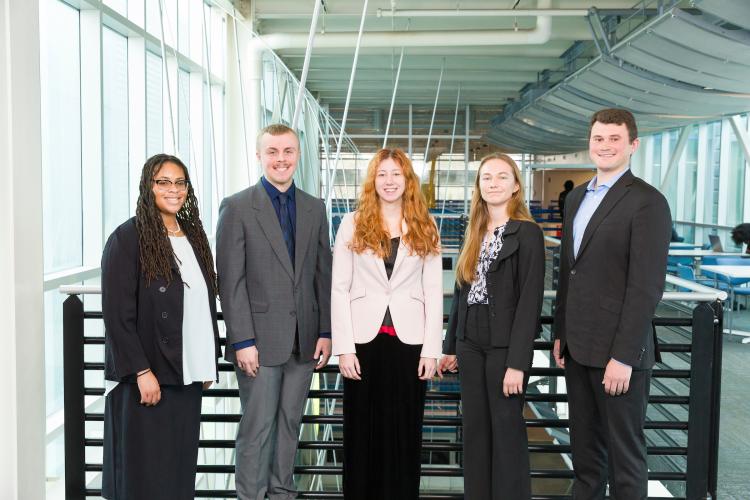
We designed and used encryption methods for audio signals. We applied a variety of modern encryption methods, which utilized different ways to verify users. We ran these on hardware devices such as digital signal processors (DSP), Field-programmable-gate-arrays (FPGA) and microprocessors which offer tools for changing and modifying signals. We aimed to create a system that could encrypt and decrypt a voice file quickly and cheaply. Our project focused on protecting sensitive voice communications, such as military messages, from being intercepted.
Our system encrypts a user’s voice as they spoke into a microphone. The microphone picked up the voice and our system used an analog-to-digital converter (ADC) to change the voice to a digital signal. The DSP chip then encrypted the digital signal using a secure key. We sent the signal to a USB drive and transmitted it through an antenna as a radio frequency (RF) wave. At the receiving end, we captured the RF signal, decrypted it and turned it back into the original voice message.
This design made it easy to add the encryption to hardware. Our system proved both secure and efficient. The microphone and ADC converted signals well, and the antenna safely transmitted the encrypted RF waves. Our demonstration showed that the system could encrypt, transmit and decrypt voice data.
Our project showed the importance of protecting communication in risky situations. The low hardware costs and simple algorithms made it ideal for industries like defense, healthcare and business.
Danielle Awoniyi, Travis Gabauer, Amira McKaige, Amelia Wondracek, Adam Zoiss
Uwe Meyer-Baese, Ph.D.
Kansas City National Security Campus
Spring
